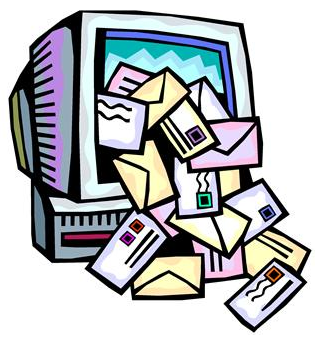This is the tenth (and final) of the 2013 LegalTech New York (LTNY) Thought Leader Interview series. eDiscoveryDaily interviewed several thought leaders at LTNY this year and generally asked each of them the following questions:
- What are your general observations about LTNY this year and how it fits into emerging trends?
- If last year’s “next big thing” was the emergence of predictive coding, what do you feel is this year’s “next big thing”?
- What are you working on that you’d like our readers to know about?
Today’s thought leader is Craig Ball. A frequent court appointed special master in electronic evidence, Craig is a prolific contributor to continuing legal and professional education programs throughout the United States, having delivered over 1,000 presentations and papers. Craig’s articles on forensic technology and electronic discovery frequently appear in the national media, and he writes a monthly column on computer forensics and eDiscovery for Law Technology News called Ball in your Court, as well as blogs on those topics at ballinyourcourt.com.
Craig was very generous with his time again this year and our interview with Craig had so much good information in it, we couldn’t fit it all into a single post. So, today is part 1. Parts 2 and 3 will be published in the blog on Thursday and Friday. A three-parter!
Note: I asked Craig the questions in a different order and, since the show had not started yet when I interviewed him, instead asked about the sessions in which he was speaking.
If last year’s “next big thing” was the emergence of predictive coding, what do you feel is this year’s “next big thing”?
I think this is the first year where I do not have a ready answer to that question. It’s like the wonderful movie Groundhog Day. I am on the educational planning board for the show, and as hard as we try to find and present fresh ideas, technology assisted review is once again the dominant topic.
This year, we will see a change of the marketing language repositioning the (forgive the jargon) “value proposition” for the tools being sold continuing to move more towards the concept of information governance. If knowledge management had a “hook up” here at LTNY with eDiscovery, their offspring would be information governance. Information governance represents a way to spread the cost of eDiscovery infrastructure among different budgets. It’s not a made up value proposition. Security and regulatory people do have a need, and many departments can ultimately benefit from more granular and regimented management of their unstructured and legacy information stores.
I remain something of a skeptic about what has come to be called “defensible deletion.” Most in-house IT people do not understand that, even after you purchase a single instance de-duplication solution, you’re still going to have as much of 40% “bloat” in your collection of data between local stores, embedded and encoded attachments, etc. So, there are marked efficiencies we can achieve by implementing sensible de-duplication and indexing mechanisms that are effective, ongoing and systemic. Consider enterprise indexing models that basically let your organization and its information face an indexing mechanism in much the same way as the internet faces Google. Almost all of us interact with the internet through Google, and often get the information we are seeking from the Google index or synopsis of the data without actually proceeding to the indexed site. The index itself becomes the resource, and the document indexed a distinct (and often secondary) source. We must ask ourselves: “if a document is indexed, does it ever leave our collection?”
I also think eDiscovery education is changing and I am cautiously optimistic. But, people are getting just enough better information about eDiscovery to be dangerous. And, they are still hurting themselves by expecting there to be some simple “I don’t really need to know it” rule of thumb that will get them through. And, that’s an enormous problem. You can’t cross examine from a script. Advocates need to understand the answers they get and know how to frame the follow up and the kill. My cautious optimism respecting education is function of my devoting so much more of my time to education at the law school and professional levels as well as for judicial organizations. I am seeing a lot more students interested in the material at a deeper level, and my law class that just concluded in December impressed me greatly. The level of enthusiasm the students brought to the topic and the quality and caliber of their questions were as good as any I get from my colleagues in the day to day practice of eDiscovery. Not just from lawyers, but also from people like you who are deeply immersed in this topic.
That is not so much a credit to my teaching (although I hope it might be). The greatest advantage that students have is that they have haven’t yet acquired bad habits and don’t come with preconceived notions about what eDiscovery is supposed to be. Conversely, many lawyers literally do not want to hear about certain topics–they “glaze” and immediately start looking for a way to say “this cannot be important, I cannot have to know this”. Law students don’t waste their energy that way. If the professor says “you need to know this”, then they make it their mission to learn. Yesterday, I had a conversation with a student where she said “I really wish we could have learned more about search strategies and more ways to apply sophisticated tools hands on”. That’s exactly what I wish lawyers would say.
I wish lawyers were clamoring to better understand things like search or de-duplication or the advantages of one form of production over another. Sometimes, I feel like I am alone in my assessment that these are crucial issues. If I am the only one thinking that settling on forms of productions early and embracing native forms of production is crucial to quality, what is wrong with me?
I am still surprised at how many people TIFF most of their collection or production.
They have no clue how really bad that is, not just in terms in cost but also in terms of efficiency. I am hoping the dialogue about TAR will bring us closer to a serious discussion about quality in eDiscovery. We never had much of a dialogue about the quality of human review or the quality of paper production. Either we didn’t have the need, or, more likely we were so immersed in what we were doing we did not have the language to even begin the conversation.
I wrote in a blog post recently about an experiment discussed in my college Introductory Psychology course where this cool experiment involved raising kittens such that they could only see for a few hours a day in an environment composed entirely horizontals or verticals. Apparently, if you are raised from birth only seeing verticals, you do not learn to see horizontals, and vice-versa. So, if I raise a kitten among the horizontals and take a black rod and put it in front of them, they see it when it is horizontal. But, if I orient it vertically, it disappears in their brain. That is kind of how we are with lawyers and eDiscovery.
There are just some topics that you and I and our colleagues see the importance of, but lawyers have been literally raised without the ability to see why those things matter. They see what has long been presented to them in, say, Summation or Concordance, as an assemblage of lousy load files and error ridden OCR and colorless images stripped of embedded commentary. They see this information so frequently and so exclusively that they think that’s the document and, since they only have paper document frames of reference (which aren’t really that much better than TIFFs), they think this must be what electronic evidence looks like. They can’t see the invisible plane they’ve been bred to overlook.
You can look at a stone axe and appreciate the merits of a bronze axe – if all that you’re comparing it to are prehistoric tools, a bronze axe looks pretty good. But, today we have chainsaws. I want lawyers demanding chainsaws to deal with electronic information and to throw away those incredibly expensive stone axes; but, unfortunately, they make more money using stone axes. But, not for long. I am seeing the “house of cards” start to shake and the house of cards I am talking about is the $100 to $300 (or more) per gigabyte pricing for eDiscovery. I think that model is not only going to be short lived, but will soon be seen as negligence in the lawyers who go that route and as exploitive gouging by service providers, like selling a bottle of water for $10 after Hurricane Sandy. There is a point at which price gouging will be called out. We can’t get there fast enough.
More from Craig tomorrow!
And to the readers, as always, please share any comments you might have or if you’d like to know more about a particular topic!
Disclaimer: The views represented herein are exclusively the views of the author, and do not necessarily represent the views held by CloudNine Discovery. eDiscoveryDaily is made available by CloudNine Discovery solely for educational purposes to provide general information about general eDiscovery principles and not to provide specific legal advice applicable to any particular circumstance. eDiscoveryDaily should not be used as a substitute for competent legal advice from a lawyer you have retained and who has agreed to represent you.





